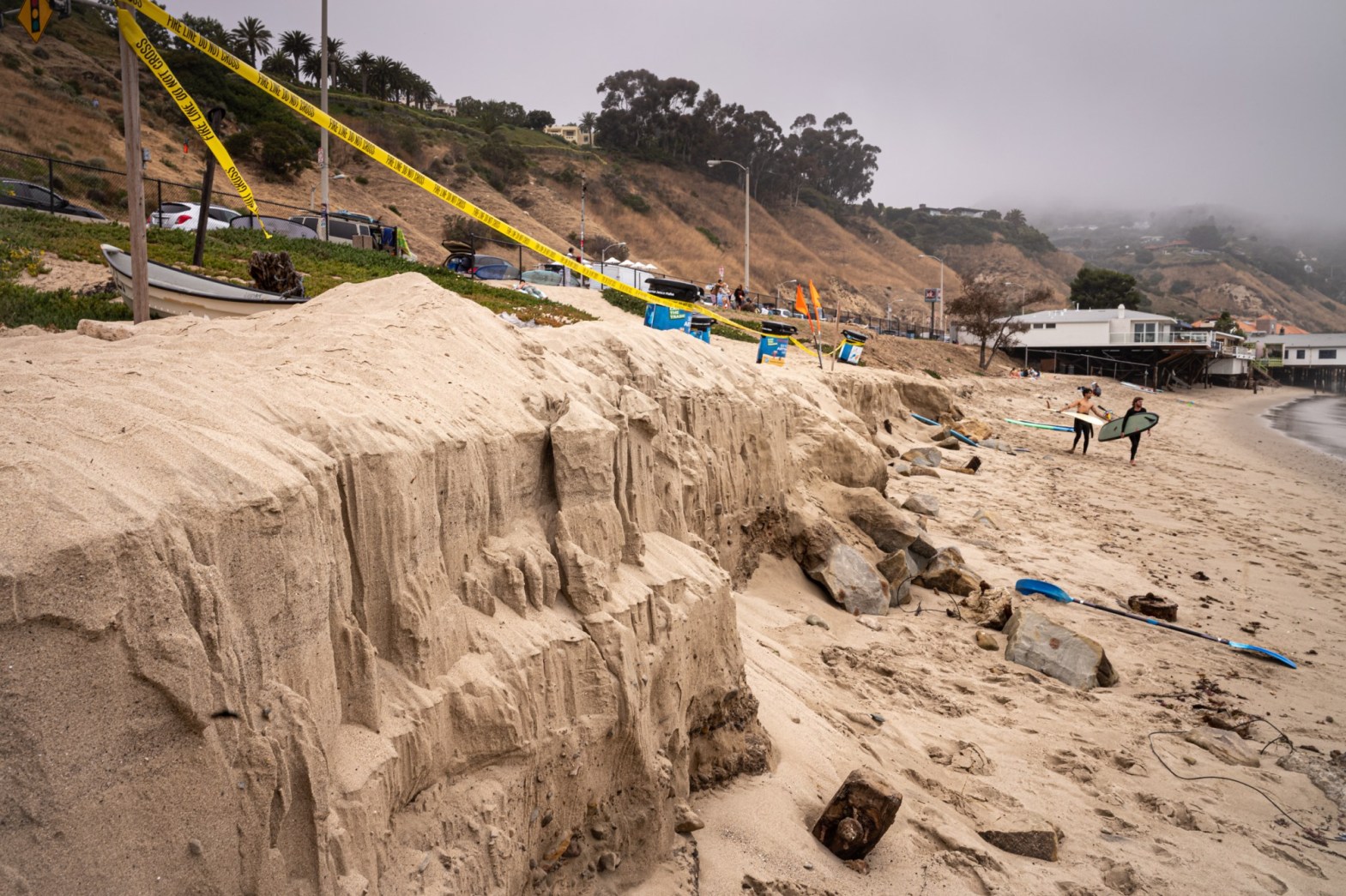

Eroding sand along Malibu beach. The sand at Malibu’s famed point is disappearing, and officials put in emergency rip-rap to try to stop waves from crumbling a wall next to the parking lot. (Photo by David Crane, Los Angeles Daily News/SCNG)
To remedy the impacts of climate change on local beaches, the Los Angeles County Board of Supervisors voted to create a coastal resiliency plan on Tuesday, Nov. 7.
The plan calls for reusing sediment that is scooped out of flood control channels, mountain river dams and harbors to augment some of the 18 L.A. County beaches that have grown narrower due to loss of sand. It also calls for creating hybrid shoreline devices that combine manmade materials with natural elements to lessen the impact of waves that cause erosion.
“L.A. County’s beaches are iconic. They define our region and our identity,” said Third District Supervisor Lindsey Horvath, co-author of the board motion approved by unanimous vote. “If we don’t act soon the public may lose access to these beaches forever.”
According to the California Regional Assessment National Shoreline Management Study in 2018, Southern California’s ocean economy in 2013 was valued at about $27 billion. L.A. County’s ocean-related tourism and recreation industries generated more than $2.2 billion in 2020.
“The county’s beaches are more than just cultural touchstones: They provide a critical public resource to residents seeking respite from extreme heat, access to the water and nature, and recreational opportunities,” the motion reads.
Every year about 70 million people visit the county’s beaches, which stretch more than 75 miles from Malibu to Redondo Beach to San Pedro.
“Many residents and children in my district have never been to the beach,” said First District Supervisor Hilda Solis. “Everything we do to help preserve that shoreline and access for the public is of paramount importance.”
Erosion wiped out a […]
Full article: www.presstelegram.com
Clean water is essential for life, yet millions of Americans unknowingly consume contaminants through their…
Human brains contain higher concentrations of microplastics than other organs, according to a new study, and the…
From the Office of the Governor: In anticipation of a multi-day, significant atmospheric river in Northern California,…
From Governor Newsom: Scientists, water managers, state leaders, and experts throughout the state are calling…
Photo: A harmful algal bloom in Milford Lake, Kansas, made the water appear bright green.…
An expanded plastic foam coffee cup is at a donut shop in Monterey Park, California.…